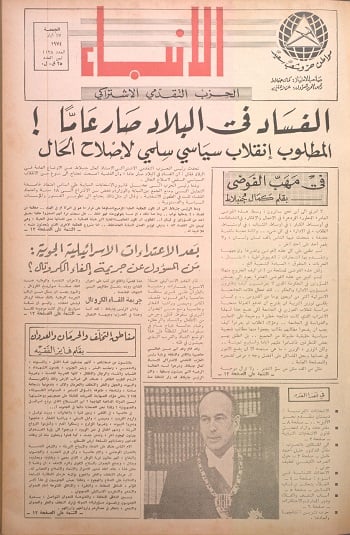The U.N.’s World Humanitarian Summit Is a Total Mess
By John Norris / Foreign Policy
21 مايو 2016

The World Humanitarian Summit is a first-of-its-kind gathering with grand ambitions to revolutionize the international aid system. Unfortunately, it is also shaping up as something of a train wreck.
The atmospherics have been distressing in the weeks running up to the U.N.-organized, Istanbul-based summit, which will begin on May 23. One of the world’s most important humanitarian organizations, Doctors Without Borders, pulled out of the gathering with a bitter denunciation of the world’s failure to protect civilians. The government of Kenya offered that it is contemplating shutting down refugee camps and expelling their 600,000 occupants back into Somalia and South Sudan. The European Union, meanwhile, announced a major aid program to stem refugee flows in conjunction with the government of Sudan — a country still headed by a president facing a genocide indictment at The Hague — that will reportedly be used to help build detention centers for would-be migrants and will provide the Sudanese government with high-tech equipment to track both migrants and its own citizens.
The World Humanitarian Summit’s host, Turkish President Recep Tayyip Erdogan, has only added to the drama: He recently pushed out his prime minister in a power grab and continues to crack down on the media and opposition groups with seemingly reckless abandon. Some of this is part and parcel for the upheaval that continues to ripple across the Middle East, but it is hardly reassuring for attendees of a summit predicated on fundamental human rights. Unsurprisingly, foreign ministers, key heads of state, and business leaders have been quietly telling U.N. organizers that, sadly, complications in their schedule will not allow them to attend the summit.
This is hardly an auspicious lead-up for a summit that U.N. Secretary-General Ban Ki-moon hoped would bring together heads of state, national and international aid organizations, business and opinion leaders, and representatives of communities ravaged by war to agree that they “can and must do better to end conflict, alleviate suffering, and reduce risk and vulnerability.”
How has a summit that was launched with the best of intentions gone so wrong? Let us count the ways.
The United Nations has done the humanitarian community no favors in how it has organized the summit. Previous successful summits, such as the gatherings on the new Sustainable Development Goals (or SDGs) and the Paris climate agreement, were capstones of intensive, multiyear negotiations. They worked because those talks had already produced major agreements — allowing beaming world leaders a chance to stand on the stage and talk about all the hard work, compromise, and the spirit of unity that brought them to that day.
The World Humanitarian Summit, however, is taking place before there have been any intergovernmental negotiations on serious reforms of the global humanitarian system. Indeed, it remains unclear how or when such talks might be launched. The secretary-general presented his own report in February of suggested reforms to the humanitarian system, which included a number of recommendations for member states, such as increasing budgets for both the U.N. and local relief organizations. But it made almost no mention of what the United Nations itself would do to bring its approach to humanitarianism into the modern era. This produced considerable backlash from member states resentful of being told how to do their business by the U.N. bureaucracy.
So instead of serving as a venue for negotiations, the World Humanitarian Summit has been designed more as a gigantic jamboree, with governments, civil society, relief organizations, and the private sector all supposed to arrive at an agreement in some organic and spontaneous fashion. It is not clear what the secretary-general thinks will happen when he gets the world’s humanitarian stakeholders together on a big global stage — in the midst of the worst humanitarian crises in decades — and shines a bright light on them before they have had any chance to agree on anything. But chances are, he’s not going to get the happy handshakes and photo-ops that follow the conclusion of a successful summit.
In some ways, Turkey is the perfect location for a humanitarian summit. The country hosts an enormous population of Syrian refugees — more than 2.7 million people, according to U.N. figures — and by most accounts has dealt with that influx reasonably well.
Turkey is also about the worst possible host for such a gathering. Erdogan’s government increasingly resembles the kind of autocracy that triggers humanitarian emergencies in the first place. In the name of fighting “terrorism,” his armed forces and police have relentlessly gone after his political opponents, particularly Kurds. Fewer and fewer heads of state want to be seen standing by his side.
Human rights groups and humanitarians still also object to the EU-Turkey deal on refugees, feeling that it allows the European Union to skirt its responsibilities under international law to provide refugees with safe haven. Amnesty International has called the deal “a historic blow to [human] rights” and a willful violation of international and European law. It will certainly be cited by any number of developing countries eager to push out their own refugee populations. For example, it is hard to imagine that EU officials’ objections to Kenya’s move to expel Somali refugees will have much resonance or moral weight in the aftermath of their own attempts to rid themselves of Syrian refugees on their soil.
Turkey is also a particularly difficult spot for the summit because of ongoing security concerns. The Islamic State has conducted a number of terrorist attacks in Turkey in recent months, and the summit makes an appealing target by almost any measure.
Fiddling while Rome burns?
The third major reason that the summit has been so controversial goes to the reason why Doctors Without Borders pulled out of the summit: the widespread targeting of civilians and aid workers in conflicts around the globe and the relative impunity with which these attacks have taken place. In its statement pulling out of the summit, the aid group called the gathering in Istanbul “a fig-leaf of good intentions, allowing these systematic violations, by states above all, to be ignored.”
The unchecked daily parade of barrel bombs, deliberate attacks on hospitals, and other atrocities have left those on the front lines of the crisis convinced that the world is content to watch Syria burn without imposing any costs on those inflicting the suffering. The U.N. should have realized that its meager promise to make “norms that safeguard humanity” a key theme of the summit, without offering any idea of concrete actions, was not going to be enough to keep those on the front lines on board.
It is hard to have a serious talk about the norms of protecting civilians at a time when such rhetoric feels so empty.
But for all the headaches around the World Humanitarian Summit, there’s no denying the international humanitarian system desperately needs reform. Relief workers and agencies are overwhelmed, underfunded, and often trying to save lives despite a relief architecture that is decades outdated. The World Humanitarian Summit should be seen as the beginning of a process, not its culmination. And a serious discussion about reform — including on civilian protection, dealing with the shocks of climate change, and empowering the local groups that are the first responders to emergencies — will surely need to stretch into the term of the next U.N. secretary-general and the next U.S. president.
 عن أمل جنبلاط المتجدد: لبنان يستحق النضال
عن أمل جنبلاط المتجدد: لبنان يستحق النضال
 صحافيون أم عرّافون!
صحافيون أم عرّافون!
 ماذا يجري داخل أروقة بيت الكتائب المركزي؟
ماذا يجري داخل أروقة بيت الكتائب المركزي؟


 عن الخرائط التي تُرسم والإتفاقات التي تتساقط!
عن الخرائط التي تُرسم والإتفاقات التي تتساقط!
 “الإنحراف في الحياة”/ بقلم كمال جنبلاط
“الإنحراف في الحياة”/ بقلم كمال جنبلاط
 هاشتاغ #صار_الوقت يحل أولاً في حلقة جنبلاط
هاشتاغ #صار_الوقت يحل أولاً في حلقة جنبلاط
 طاولة نقاش عن أزمة الصحافة في جامعة AUST
طاولة نقاش عن أزمة الصحافة في جامعة AUST
 عبدالله: ليظهر لنا وزير مكافحة الفساد حرصه في صفقات البواخر والفيول
عبدالله: ليظهر لنا وزير مكافحة الفساد حرصه في صفقات البواخر والفيول
 عبدالله: غريب أمر وزارة مكافحة الفساد!
عبدالله: غريب أمر وزارة مكافحة الفساد!

 Comment to Uri Avnery: How Sad What Is Looming Ahead
Comment to Uri Avnery: How Sad What Is Looming Ahead
 “Not Enough!”
“Not Enough!”
 … لمن لم يقرأ يوسف البعيني/ بقلم وسام شيّا
… لمن لم يقرأ يوسف البعيني/ بقلم وسام شيّا
 كمال جنبلاط في مولده الأول بعد المائة: تعاليمه وأفكاره ما زالت الحلّ/بقلم عزيز المتني
كمال جنبلاط في مولده الأول بعد المائة: تعاليمه وأفكاره ما زالت الحلّ/بقلم عزيز المتني
 رئيس حزب/ وليس (… سابقاً)/ بقلم د. خليل احمد خليل
رئيس حزب/ وليس (… سابقاً)/ بقلم د. خليل احمد خليل
 التوازن السياسي في لبنان
التوازن السياسي في لبنان
 لبنان… مشاريع انقلابية مؤجلة
لبنان… مشاريع انقلابية مؤجلة
 جنبلاط وحَمَلة أختام الكاوتشوك
جنبلاط وحَمَلة أختام الكاوتشوك
 Le Liban est un symbole de tolérance
Le Liban est un symbole de tolérance
 Our Automated Future
Our Automated Future
 The True Origins of ISIS
The True Origins of ISIS
 Les Misérables vs. Macron
Les Misérables vs. Macron
 عذراً أيها المعلم/ بقلم مهج شعبان
عذراً أيها المعلم/ بقلم مهج شعبان
 رساله الى المعلم / بقلم ابو عاصم
رساله الى المعلم / بقلم ابو عاصم
 إلى روح القائد والمعلم كمال جنبلاط/ بقلم أنور الدبيسي
إلى روح القائد والمعلم كمال جنبلاط/ بقلم أنور الدبيسي
 أسرار وعناوين الصحف ليوم الجمعة 14 كانون الاول 2018
أسرار وعناوين الصحف ليوم الجمعة 14 كانون الاول 2018














